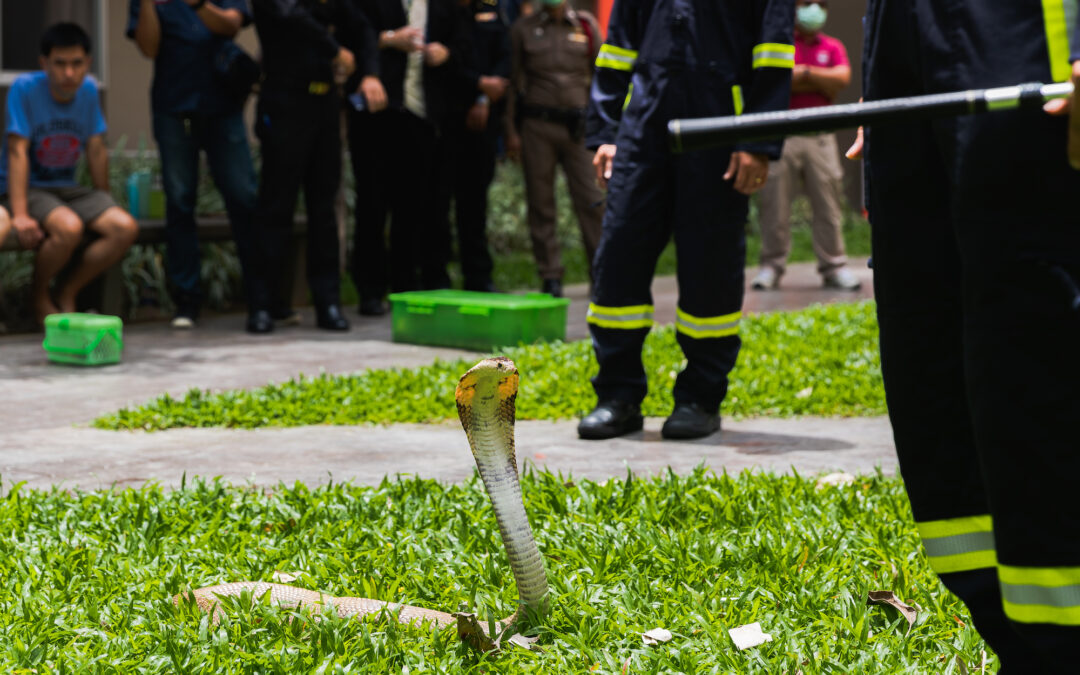Workers should be aware of their surroundings when working outdoors, especially in warm weather, because they may be exposed to many hazards, including stray animals, insects, and snakes. They should be cautious when working in tall grass or around piles of leaves and wood. Although more people in the United States die annually by bees, wasps, and scorpions than by snakes, workers can experience a serious allergic reaction or infection from nonvenomous snake bites and should receive medical treatment.
Discussion Points:
• Why are snakes a hazard?
• Survey the job site before starting the job task,
• What are the signs and symptoms of a snake bite?
• What is the first aid treatment for a snake bite?
• What information should be included in the training?
Discussion:
Employers should survey the job site, and workers should receive training on the hazards of the working environment before working outdoors. This should include the potential hazards of snakes; workers should be instructed not to attempt to pick up or trap snakes; snakes usually will not attack unless provoked.
Workers should wear protective boots, long pants, a long-sleeve shirt, and leather gloves when working outdoors around debris. They should use a tool such as a shovel to move debris; to create a barrier between the snake and themself. If they see a snake, they should avoid sudden movements, notify their supervisor, and call for professional assistance. If bitten by a snake, remain calm and inform your supervisor. If possible, take a photograph of the snake with your cell phone. Identifying the snake can help with treatment. Always treat a
snake bite as if it is venomous.
Symptoms may include puncture marks at the site of the wound with localized swelling, redness, blistering, bleeding, tenderness and pain, and nausea and vomiting. In extreme cases, one may experience labored breathing, rapid heart rate, weak pulse, weakness, disturbed vision, increased sweating and salivation, numbness or tingling around the face and limbs, muscle twitching, convulsions, and shock. Wash the bite area gently with soap and water and remove rings, watches, and other jewelry. Cover the bite with a clean, dry dressing, sit or lay down, immobilize the affected area and keep it below heart level, and call for medical assistance immediately. It may be helpful to mark the advancing edge of the swelling with a marker; this will help determine the bite severity of the wound when treated by medical personnel. Recovery from snake bites usually takes more than three weeks. More than 25% of snakebite victims need from one to nine months for recovery. If the bite wound is left untreated, venom may cause changes in the blood cells and damage blood vessels, causing internal bleeding and may result in severe organ damage or death.
As always, be safe out there!


Recent Comments